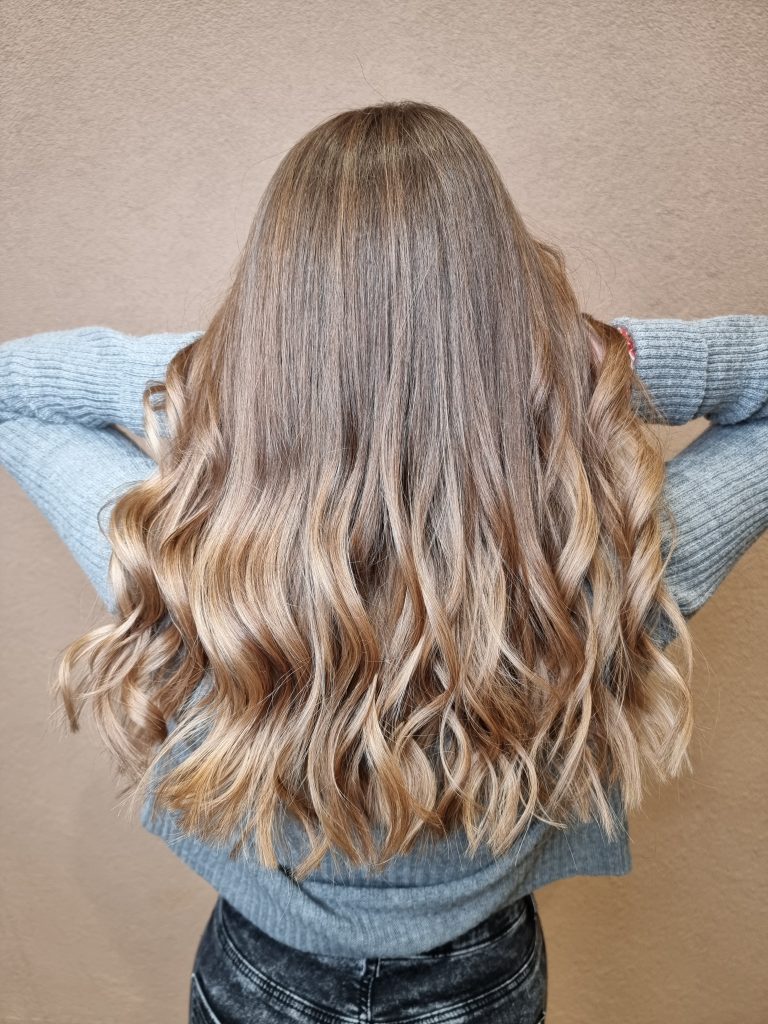
"Your hair breaks because they are telling you something"
Re-evaluating some aspects of your daily and hair routine is the first step in determining why your hair may be breaking.
Do you properly manage your wet hair, or do you always style them with thin bands?
These could be two common reasons that lead to such damage, but let’s find out more.
It is simple to understand that dry hair frequently causes hair breakage. It is commonly found in hair that is prone to dryness, such as type 4 very curly hair.
The hair is very fragile because it lacks elasticity and moisture, and even simple brushing can break it.
Washing your hair and scalp with gentle products will keep moisture in and give your hair shine.
Heat styling
Always effective and very impressive in terms of results, but styling with a straightening iron or curling iron is another very common cause of hair breakage.
Thermal tools can cause serious damage to hair when used without proper precautions.
Apply heat protective styling products or a heat protective hairspray. These products build a protective barrier between the tools and the hair.
At the same time, invest in high quality thermal tools and control their use by trying no-heat curls hairstyling.
We know how much you love the feeling of freshly washed hair, especially if you have an oily hair.
Frequent washes will refresh your scalp, but the shampoo's cleansing agents will also dehydrate the ends and lengths of your hair.
If you have intense oiliness, choose a scalp balancing shampoo or a very gentle shampoo for frequent use to find the balance between oily scalp and dry ends.
By trimming the split ends, breakage at the ends can be avoided. Therefore, schedule your haircut appointments and our hair experts will tell you everything you need to know about the frequency of your haircuts.
Choose to protect it.
As far as styling, try protective hairstyles with braids or sloppy knots to give your hair a break from wind exposure, pulling, and heat styling.
Pay close attention to the hair bands. Replace them with silk scrunchies or claw clips
Another secret to reduce breakage is to be cautious when handling wet hair. Hair is at its most fragile state when wet. So, extra attention! Another secret to reduce breakage is to be cautious when handling wet hair. Hair is at its most fragile state when wet. So, extra attention!
After shampooing, use a microfiber hair towel or a cotton t-shirt to absorb excess moisture.
Never untangle hair when wet and use a high-quality hairbrush or a comb with thick, sparse tines.
When we refer to home hair treatment, we mean a professional hair treatment that you can do once a week at home by yourself.
If you are not sure what you need and what is good for your hair, a visit to the salon for diagnosis - counselling and suggestion is the best way to start.
Our hair experts can help you avoid wasting time and money on products that don't work for you by recommending the best ones for your hair type.
Salon treatments are more specialised and last longer than treatment you do at home.
As a result, we encourage you to include salon treatments in your quest for vibrant and healthy hair!